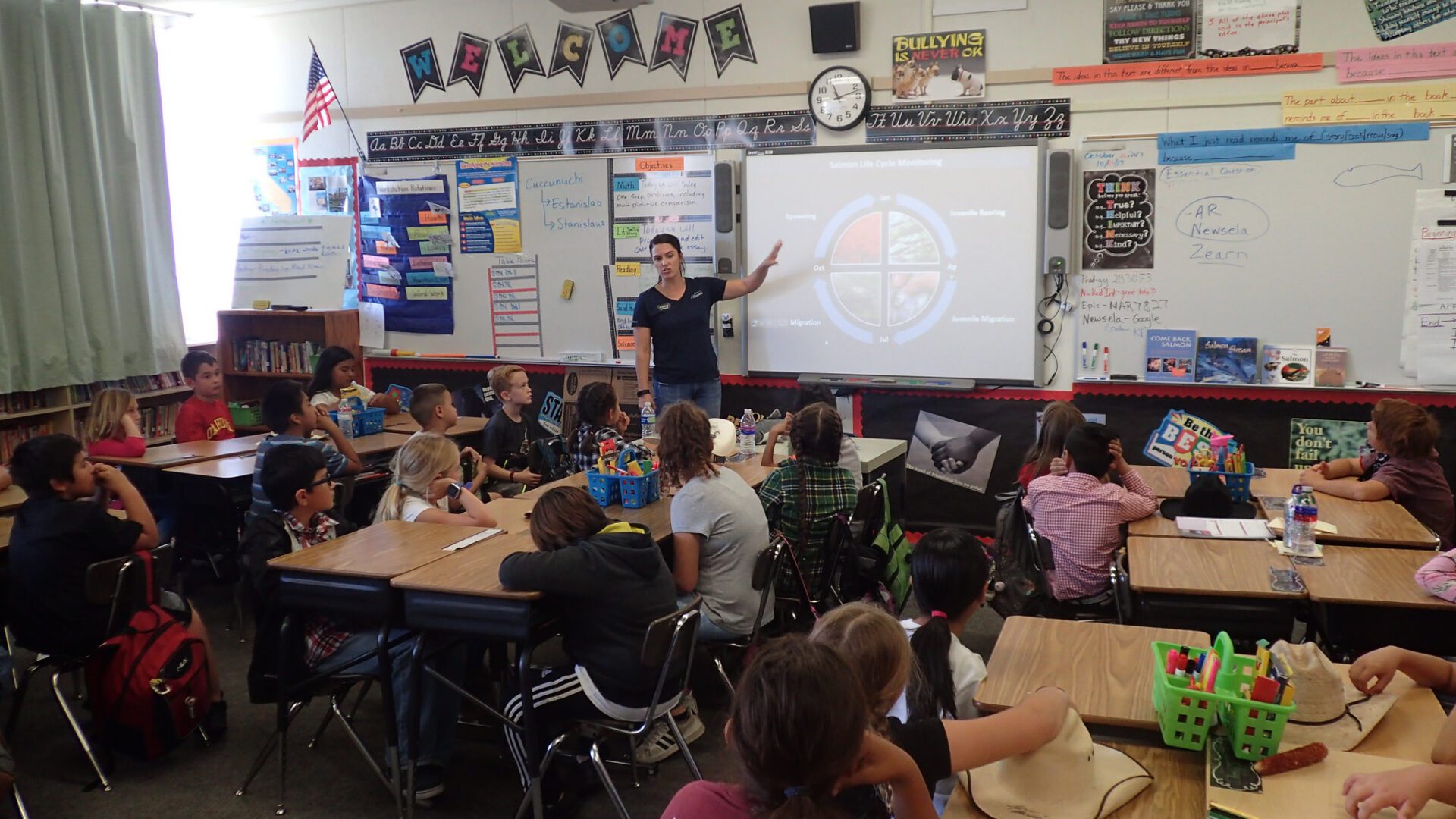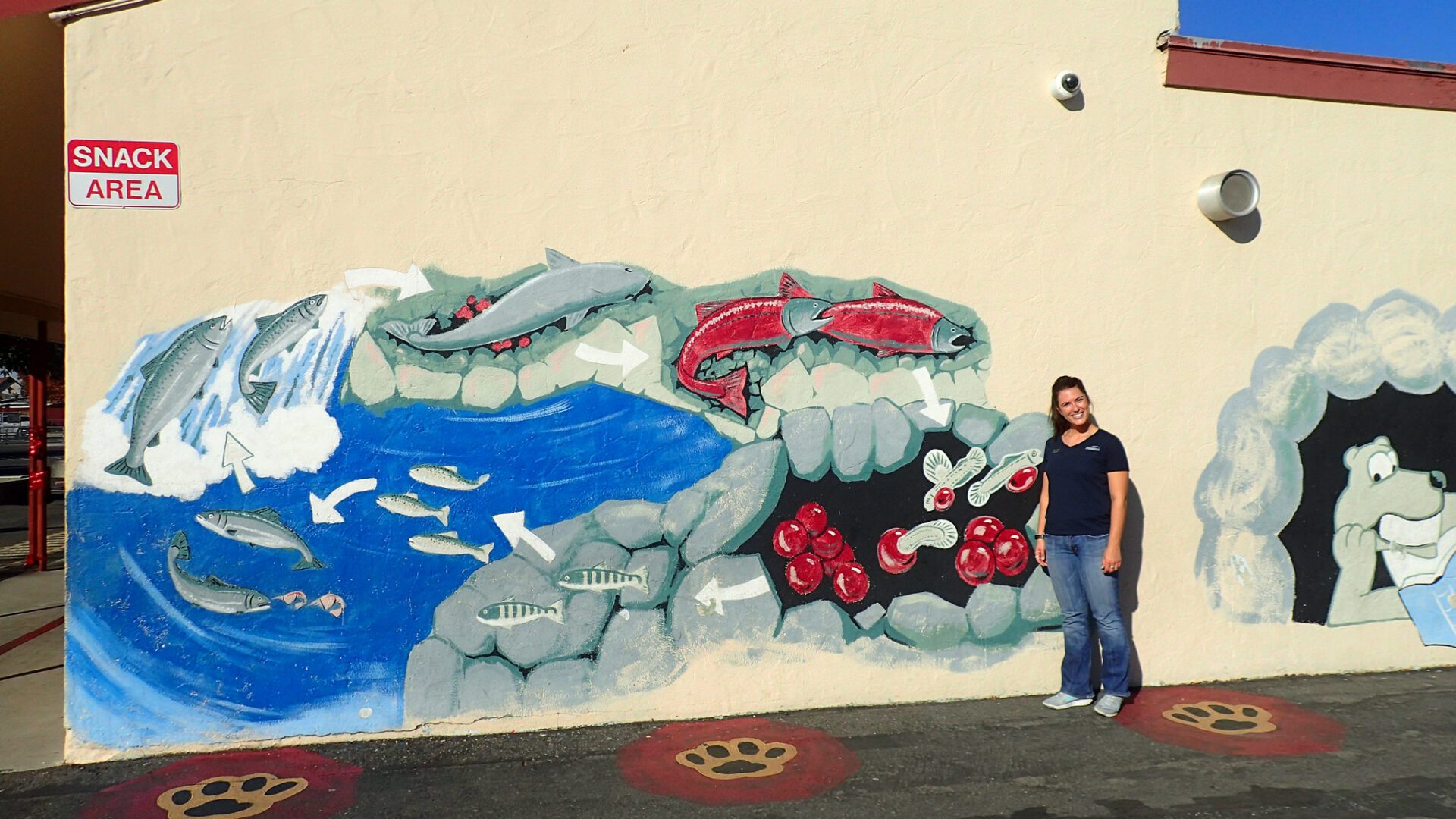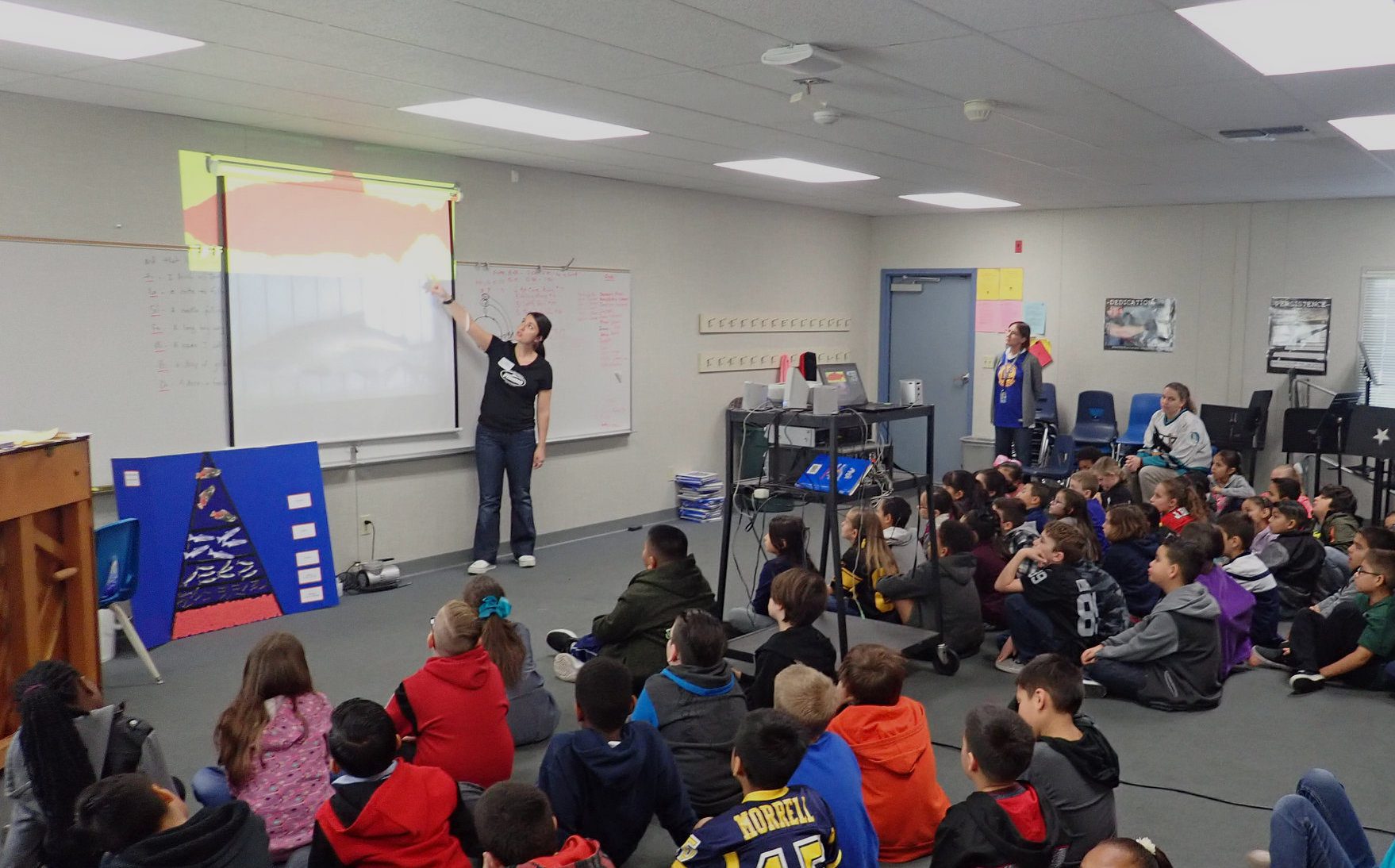Wednesday March 28, 2018

Why do salmon fry have yolk sacs? What do salmon do when they go to the ocean? What do they eat? Why do salmon die when they come back from the ocean? These are a few of the many questions third and fourth grade students have asked during class visits FISHBIO has made in the last year. The Stanislaus River Salmon Festival in Knights Ferry and Agricultural Days at elementary schools in Oakdale are some of the main outreach events FISHBIO attends during the year, but we often get requests to visit individual classrooms as well. We’ve presented at elementary schools in Waterford and Modesto, and hope to reach out to more schools in the coming years, sharing the salmon life cycle and the importance of salmon with more communities in the Central Valley. The Stanislaus and Tuolumne rivers flow through a handful of towns on their way to the San Joaquin River, and play a major role in the livelihoods of these agricultural communities. We hope emphasizing the importance of these rivers to humans as well as salmon give students a sense of responsibility to take care of the rivers located in their backyards. Generally, our classroom presentations focus on the salmon life cycle and how FISHBIO monitors fish at each stage of the cycle, including rotary screw traps for juvenile salmon, and weirs and redd surveys for adult salmon. We also use an activity called the survival pyramid to introduce the challenging journey salmon face, and the small number of salmon eggs that survive to become adults (out of about 2,000 eggs, only 3 spawning adults return from the ocean!)

Students are especially curious about our photo of a salmon carcass, and why salmon die after they spawn. We explain that salmon are important even after they die, and provide nutrients to many members of the river ecosystem. Microbial decomposition breaks down a salmon carcass and releases particles that salmon fry eat once they absorb their nutrient-rich yolk sacs and can swim freely. The body of a salmon also becomes food for other animals that prey on fish. Once ingested, nutrients pass through the animals and into droppings that are left on the ground, where they fertilize the soil and nourish trees and crops in fields surrounding the rivers. After spending about 3 years in the ocean, Chinook salmon have stored a lot of minerals and nutrients from eating krill, other crustaceans, and small fish. These nutrients that are not found locally greatly benefit agriculture in the Central Valley. Many classes are trying to do their part to help salmon populations by participating in the Salmon in the Classroom program. Students have been raising their own salmon eggs and have been releasing them at Knights Ferry on the Stanislaus River this month. We hope that learning about the salmon life cycle helps bring students’ understanding of salmon full circle.

